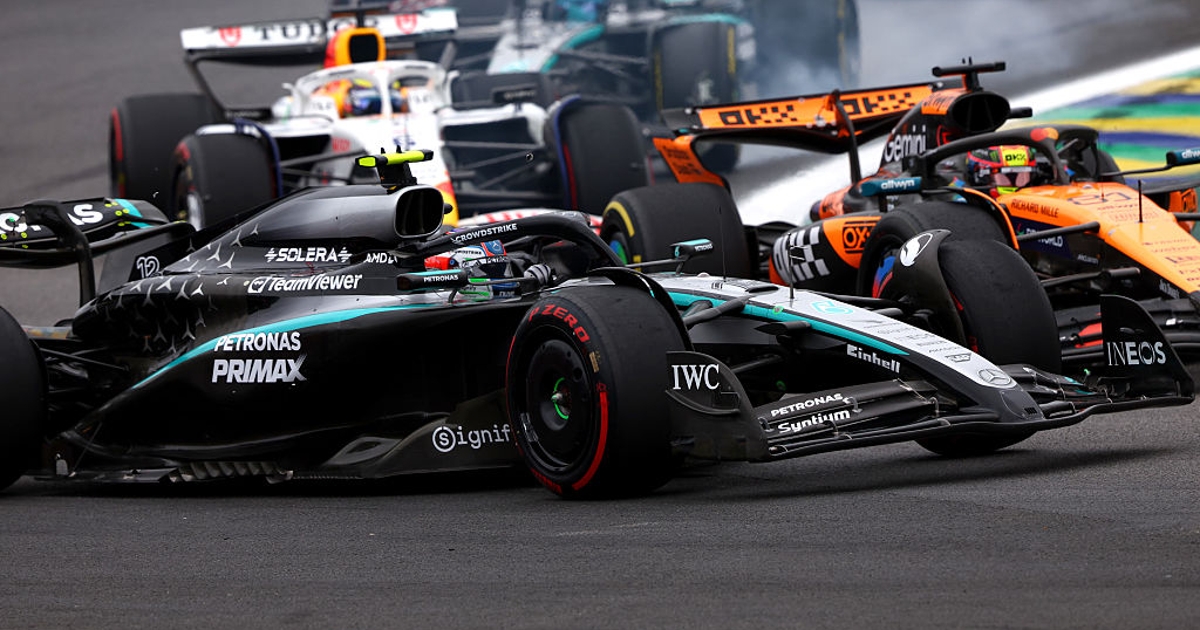F1 drivers met with the FIA and stewards ahead of this weekend’s Qatar Grand Prix to discuss the Driving Standards Guidelines (DSG) and penalty system.
The talks took place at the Lusail International Circuit on Thursday night and lasted for more than an hour, with sources saying the majority of drivers wanted to contribute their input to the discussions. As the FIA looks to continually evolve the DSG to improve decision-making, we focused on five specific cases of penalties and incidents to understand drivers’ views on each.
“The DSG is intended to be a living document, has been updated twice since its introduction, and is made available to the public to increase transparency and enable new fans to better understand stewards’ decisions,” the FIA statement said. “The current F1-specific version has been discussed and agreed with the GPDA.
“Stewards reiterated that the DSG is a guideline, not a regulation. The DSG explains how the rules are interpreted in practice, with the aim of ensuring a level playing field and consistent decision-making. Data from the past three seasons shows that the DSG, supported by detailed analysis provided by teams, has contributed to improved consistency in stewards’ decision-making.”
“After 22 races and five sprints this season, and dozens of racing incidents, the discussion mainly focused on a small number of case studies, which formed the basis of most of the discussion, including:
- Piastri-Antonelli (Interlagos): Overtaking on the inside
- Sainz – Bearman (Monza): Overtaking on the outside
- Sainz Lawsson (Zandvoort): Application of DSG in semi-axis corners
- Norris Leclerc (COTA): track limits and what should and should not count as a strike
- Verstappen – Leclerc (Mexico City): off track to gain lasting advantage
The meeting received important feedback from drivers, and the FIA said key takeaways from drivers included a strong emphasis on respecting yellow flags, a clear preference for a public hearing to be held after the race where stewards do not believe all relevant elements are available, a common view that the guidelines cannot cover all scenarios, and an emphasis on the need for experienced driver stewards on each panel.
“The FIA and F1 Stewards would like to thank the drivers and teams for their constructive comments,” the FIA added. “The discussions were frank, open and took place in a very collegial atmosphere, which was highly appreciated by the stewards. The points raised will be reflected in future improvements to the DSG in consultation with the GPDA and FIA Drivers Committee. No changes will be made to the final two Grands Prix of the 2025 season.”
On Thursday, Carlos Sainz stressed that the level of analysis witnessed on the television broadcast was indicative of the standard he feels he can achieve as a steward in F1.
“I think we’ve seen quite a few post-race incidents being analyzed recently,” Sainz said. “Some are by Karun Chandhok, some are by Jolyon Palmer, some are by Anthony Davidson. And whenever you look at the analysis of racing drivers who have raced recently and the verdicts they give, I think they’ve done a very good analysis. They’ve placed the blame correctly most of the time as to who is actually at fault or whether it’s actually just a racing incident.”
“My ideal for the future would be to have people who don’t have guidelines and can judge these types of incidents after a race like these three people do.Again, this is just my opinion, but I’m very impressed with the work some broadcasters do in dissecting each incident after a race and how to place blame or not on a particular scenario.”
“This is a level of analysis, a level of ‘stewardness’ if you want to call it that, and I think it’s a very high level. I probably don’t mean that I agree 100% with the cases that these three ex-drivers have put forward, but I think that in many cases they are very close, that is, 90% correct. If I have to go and watch F1 in the future at the level of a steward, this is more or less that level.” Thank you. ”



